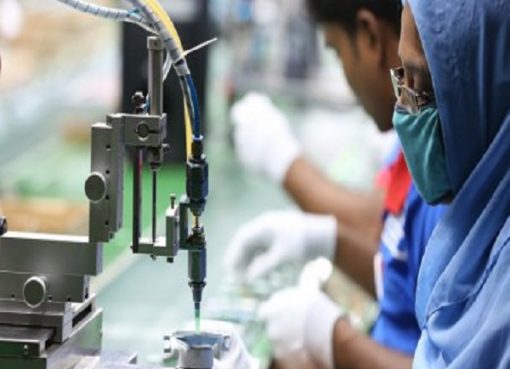Researchers from the University of Pennsylvania are developing a smart dental implant which resists bacterial growth and generates its own electricity through the motions of brushing and chewing to power a “tissue-rejuvenating light”.
In the US alone, more than three million people have dental implants to replace lost teeth. Implants fit much more securely than dentures or bridges, marking a technological leap in dental medicine. While they are meant to last 20 years or more, however, many fall short and need replacing in as little as five years. This is attributed to local problems with inflammation or disease, requiring another invasive and expensive procedure.
“We wanted to address this issue, and so we came up with an innovative new implant,” said Professor Geelsu Hwang, a former engineer who now works at Pennsylvania’s school of dental medicine.
The implant integrates two important technologies, Hwang explained. One is a nanoparticle-infused material which resists bacterial growth. The other is an embedded light source, powered by the natural motions if the mouth such as mastication and toothbrushing, for phototherapy. Hwang and his colleagues hope that their novel platform could find applications not just in dental implants but in other technologies such as future joint replacements.
“Phototherapy can address a diverse set of health issues,” says Hwang. “But once a biomaterial is implanted, it’s not practical to replace or recharge a battery. We are using a piezoelectric material, which can generate electrical power from natural oral motions to supply a light that can conduct phototherapy, and we find that it can successfully protect gingival tissue from bacterial challenge.”
The researchers used barium titanate (BTO). This has piezoelectric properties leveraged in applications such as capacitators and transistors, but it has not been explored in the context of anti-infectious implantable biomaterials.
To test its potential as the foundation for a dental implant, the team first used discs embedded with nanoparticles of BTO and exposed them to Streptococcus mutans: a primary component of the bacterial biofilm responsible for dental plaque. They found that the discs resisted biofilm formation in a dose-dependent manner; those with higher concentrations of BTO were better at preventing biofilms from binding.
While earlier studies had suggested that BTO might kill bacteria outright using reactive oxygen species generated by light-catalysed or electric polarisation reactions, Hwang and colleagues came to different conclusions, due to the short-lived efficacy and off-target effects of these approaches. Instead, the material generates enhanced negative surface charge that repels the negatively charged cell walls of bacteria. It is likely that this repulsion would be long-lasting, the researchers said.
“We wanted an implant material that could resist bacterial growth for a long time because bacterial challenges are not a one-time threat,” Hwang says.
The electricity-generating properties of the material was sustained, and in tests over extended periods, the material did not leach. It also demonstrated a level of mechanical strength comparable to other materials used in dental applications. Importantly, the material did not harm normal gingival tissue in the researchers’ experiments, supporting the idea that implant could be safe to use in the mouth.
The team hopes to continue to refine their dental implant. This could include experimenting with different types of materials and perhaps even using asymmetric properties on each side of the implant components: one that encourages tissue integration on the side facing the gums and one that resists bacterial formation on the side facing the rest of the mouth.
Source: E&T










